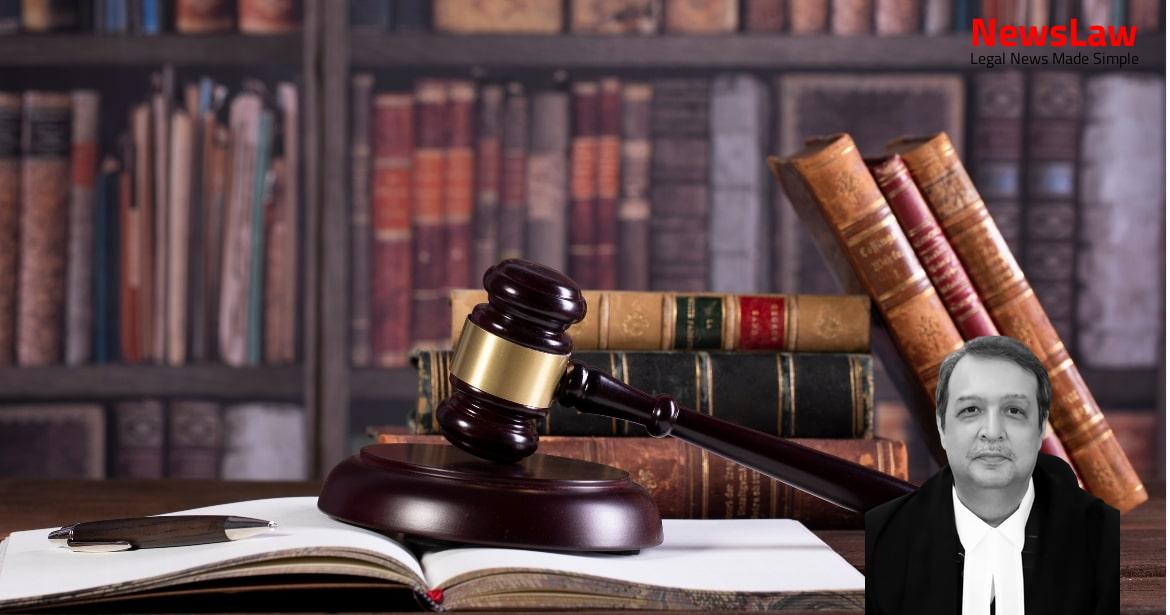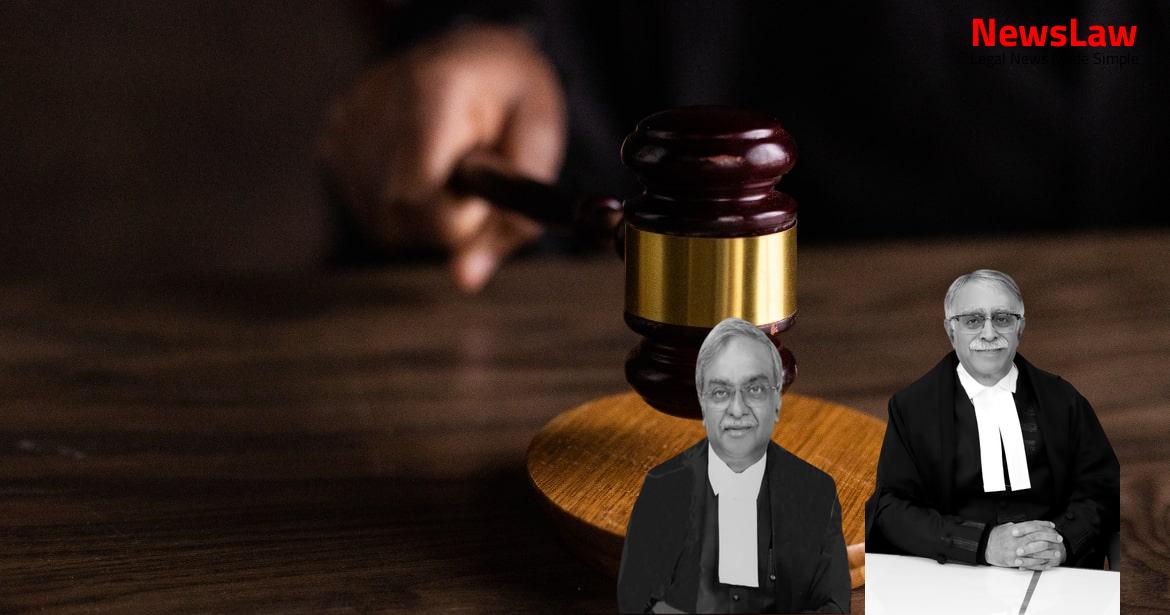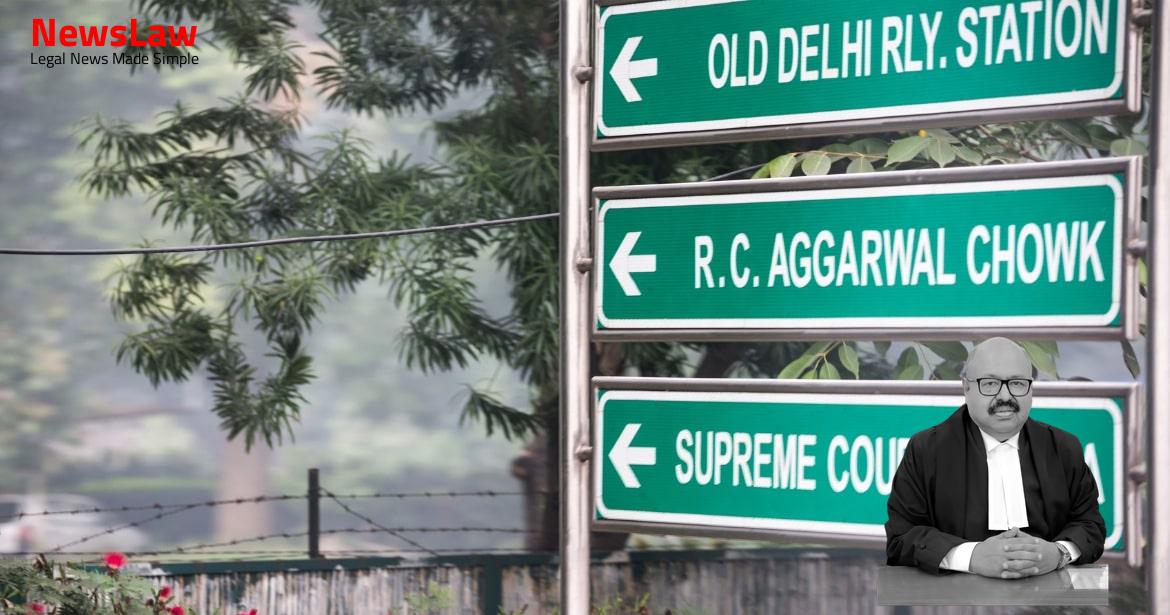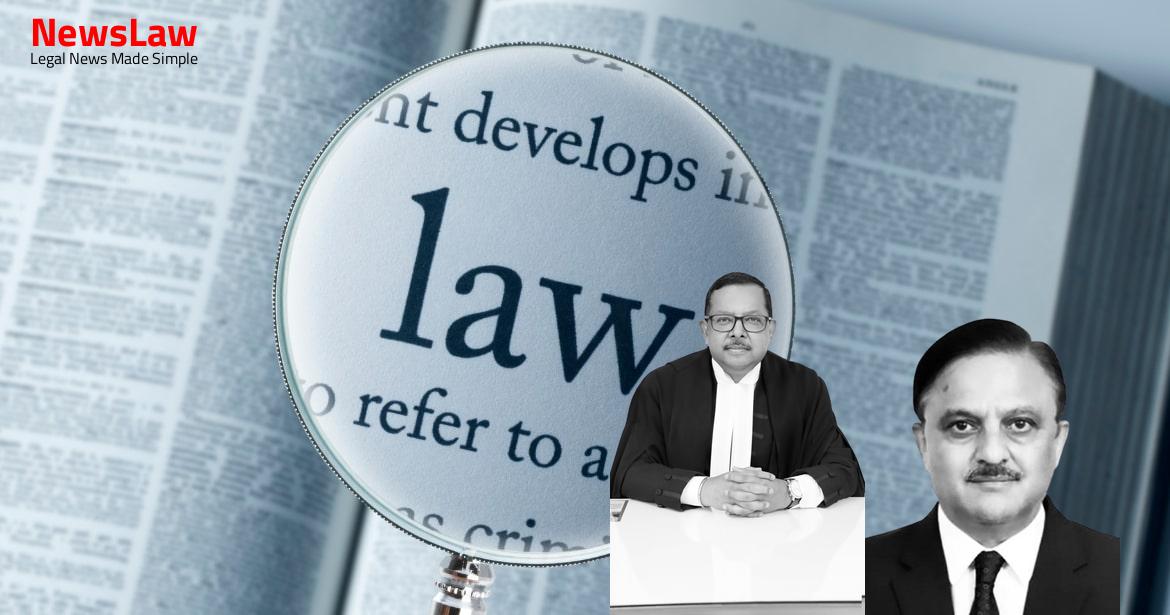Delve into the complexities of age determination in juvenile cases, as courts grapple with the challenge of ascertaining the exact age of individuals in conflict with the law. The importance of following established legal procedures and relying on concrete evidence for a fair and just resolution is paramount. Let’s uncover the legal intricacies surrounding age determination in juvenile justice cases.
Facts
- The writ applicant underwent sentence of life imprisonment and was subjected to medical examination by the Medical Board as per a Division Bench of the Allahabad High Court’s judgment in a Public Interest Litigation.
- The High Court directed Juvenile Justice Boards to determine the age of prisoners claiming to have been juveniles in conflict with the law.
- The writ applicant filed an appeal (Cr. Appeal No. 133 of 1986) against the trial court’s conviction order, which was dismissed by the High Court on 04.03.2016.
- Dissatisfied with the High Court’s decision, the writ applicant approached the Supreme Court by filing an application for Special Leave to Appeal (Crl.) No 6048 of 2016.
- Raju, a prisoner from Faizabad believed to be under 18 by the Principal Magistrate, Juvenile Justice Board, was transferred to a Special Home after an extended stay in Faizabad jail.
- The Medical Board conducted X-rays of the skull and sternum for the writ applicant.
- A Special Leave Petition was dismissed by the Court on 16.08.2016.
Arguments
- The writ applicant has not provided any document from an educational institution.
- No ossification test or modern recognized method was undertaken to determine the age of the applicant.
- Reference made to the case of Ashok v. State of Madhya Pradesh where the petitioner raised the plea of juvenility after his conviction.
- The learned counsel for the State argues that the issue of juvenility should be considered by the Sessions Court where the applicant was originally tried.
- The State requests for verification of the applicant’s claim of juvenility through the concerned Sessions Court or the Juvenile Justice Board.
- The applicant argues that the Family Register and the Medical Board certificate should be considered for determining age.
- The State opposes the writ application and calls for the Sessions Court to verify the authenticity of the documents.
- Reference made to the case of Abuzar Hossain Gulam Hossain v. State of West Bengal (2012) 10 SCC 489.
- The Sessions Court had previously recorded the petitioner’s age as 16 years, 9 months, and 19 days.
- The petitioner claims to have been a juvenile on the date of the alleged offence in 1982 and should have been dealt with under the Juvenile Justice Act of that time.
- The petitioner claims to have been born on 05.01.1981, making him approximately 16 years and 7 months old at the time of the incident.
- The claim of juvenility was not raised in the High Court but has been brought up for the first time in this special leave petition.
- The petitioner now asserts that he was a juvenile at the time of the incident, which occurred on 26.07.1997.
- Due to the claim of juvenility, the conviction and sentence of the petitioner are deemed to be set aside.
Analysis
- Under the 1986 Act, the age of juvenility was up to the 16th year.
- The determination of age is based on certificates such as matriculation, date of birth, or birth certificates from authorized bodies.
- If certificates are not available, the age can be determined through medical examination.
- The principle of fresh start aims at erasing juvenile’s past records for a new beginning.
- Procedures for dealing with children in conflict with the law without resorting to court proceedings should be promoted.
- Section 7A of the 2000 Act outlines the procedure for determining juvenility before any court.
- The Act emphasizes on the protection of child’s health, dignity, and opportunities for development.
- The rights of children, dignity, and worth should be respected throughout legal proceedings.
- Principles of juvenile justice focus on the best interest of the child and rehabilitation rather than retribution.
- It is imperative to safeguard the privacy, dignity, and rights of children involved in legal processes.
- Claims of juvenility can be raised at any stage, and if accepted, the case is forwarded to the Juvenile Justice Board for appropriate action.
- The ossification test or osteogenesis is a bone formation process used to determine age based on joint fusion up to age twenty-five.
- Matriculation certificate is given precedence for age determination, followed by the date of birth certificate from the first school attended if no matriculation certificate is available.
- Once the court passes an order following specified procedures, it becomes conclusive proof of the age of the individual.
- No further inquiry is allowed after obtaining the necessary certificates or documentary proof as per Rule 12.
- Debate exists on the reliability and extent of reliance on new ossification test reports for age determination.
- The Juvenile Justice Act differentiates a juvenile as a male below 16 years and a female below 18 years.
- The 1986 Act was in force during the commission of the offense and subsequent conviction by the Sessions Court.
- The 2000 Act repealed the 1986 Act with new provisions raising the age of juvenility from 16 to 18 years.
- Legal aid lawyers are directed to verify the ages of prisoners below 18 years using specified documents and procedures.
- Age determination inquiries require specific evidence and documents listed in Rule 12 of the Juvenile Justice Rules.
- The ossification test is relevant for determining the approximate age of a person in conflict with law when around 18 years old.
- The bone structure is not useful for age determination when a person is around 40-55 years old.
- The Court in Arjun Panditrao Khotkar v. Kailash Kushanrao Gorantyal emphasized the principle that the law does not demand the impossible.
- The Court in Shah Nawaz v. State of Uttar Pradesh reiterated that medical opinion should only be sought when certain certificates are not available.
- Inquiries for age determination under the Juvenile Justice Act are distinct from investigations or trials.
- The courts should lean towards considering the accused a juvenile in borderline cases for the promotion of their well-being.
- After the age of thirty, the ossification test is not reliable for age determination.
- The standard of proof for age determination is the degree of probability, not proof beyond reasonable doubt.
- The law emphasizes a balance between the reaction to the offense, the offender, and the victim in juvenile cases.
- The bone ossification test is questioned for its reliability and trustworthiness in age determination.
- Ocular or documentary evidence may hold precedence over medical opinions when determining age.
- The importance of public documents like birth certificates for accurate age determination is highlighted.
- The authenticity and genuineness of the Family Register on record can play a crucial role in determining the exact age of the writ applicant on the date of the incident.
- If the Family Register is found to be authentic, there may not be a need to rely on the ossification test report for age determination.
Also Read: Supreme Court Judgment:
Supreme Court Upholds Benefit of Input Tax Credit in Uttar Pradesh Value Added Tax Act 2008
Decision
- The Sessions Court, Agra is directed to examine the claim of the writ applicant convict’s juvenility within one month of receiving the order.
- The authenticity and genuineness of the Family Register submitted by the convict should be verified by the Sessions Court.
- The convict should undergo an ossification test or another modern age determination test at the Civil Hospital, Allahabad.
- The Sessions Court must submit a report on the findings to the higher court within one month.
- The Registry is instructed to send a copy of the order to the Sessions Court for compliance.
- The State’s counsel should assist in expediting the enquiry process.
- The final decision will be made based on the report from the Sessions Court regarding the convict’s claim to juvenility.
Case Title: VINOD KATARA Vs. THE STATE OF UTTAR PRADESH (2022 INSC 949)
Case Number: W.P.(Crl.) No.-000121 / 2022



